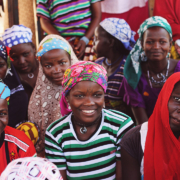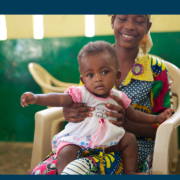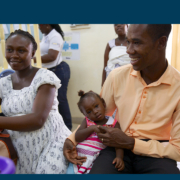New Social Norms Taxonomy to Address Family Planning Challenges in East Africa
Written by: Charudatt Chaudhari, Camber Collective
Social norms—or the “the often unspoken ‘rules’ that govern behavior”[1]—can have powerful implications on family planning and reproductive health in societies around the world. For practitioners looking to design and implement family planning programs, it is imperative to understand these norms and their impact on behavior.
Yet, social norms can be challenging to identify, understand, and compare across contexts. Last year, Breakthrough ACTION published a taxonomy for social norms that influence family planning behavior in the Ouagadougou Partnership (OP) region. Now, we are excited to share a new tool, the Taxonomy for Social Norms that Influence Family Planning in East African Countries. This taxonomy aims to help practitioners understand the family planning social norms landscape across the region. It was developed through a literature review, which identified relevant examples of norms across Burundi, Democratic Republic of the Congo, Djibouti, Ethiopia, Kenya, Rwanda, South Sudan, Sudan, Tanzania, and Uganda.
The East Africa taxonomy includes five categories of norms, each with several subcategories. Each category includes additional details and citations.

Like the OP taxonomy, this taxonomy can be used for both research and program development. For example, it can be helpful:
- In formative research to develop questions or probes around social norms which may exist in a community and influence family planning
- For gender analysis and segmentation to analyze how norms are different for men and for women, various ages/life stages, or for particular segments
- In reflective discussion with family planning and social and behavior change practitioners, particularly on the norms that impact key family planning service provision behaviors
We would also like to recognize that this taxonomy has some shortcomings. Namely that the taxonomy is not a:
- Comprehensive list of all norms. Many have not been documented in academic literature and norms are constantly changing or nuanced according to context.
- Stand-alone research or program development tool; the taxonomy is designed to complement and build on existing tools (such as the Social Norms Atlas and Getting Practical: Integrating Social Norms into Behavior Change Programs).
- List of everything that must be addressed in order to influence family planning behavior; different norms will be important in different contexts.
Additionally, norms provided in the taxonomy are select examples from the literature and do not necessarily apply to every community across the country. All norms are cited so the reader can identify whether they are from peer-reviewed or grey literature.
The taxonomy is specially designed for those working on family planning across East Africa, but it can be leveraged by anyone. We invite you to take a look at it and share your thoughts.
[1] The Institute for Reproductive Health (2019a)

 Catharine McKaig/Jhpiego/Flickr
Catharine McKaig/Jhpiego/Flickr Cambey Mikush/Photoshare
Cambey Mikush/Photoshare Sara Holbak/VectorWorks/Photoshare
Sara Holbak/VectorWorks/Photoshare Sarah Hoibak/VectorWorks/Photoshare
Sarah Hoibak/VectorWorks/Photoshare Rebekah Munnikhuysen/US Peace Corps/Photoshare
Rebekah Munnikhuysen/US Peace Corps/Photoshare Getty Images/Image of Empowerment
Getty Images/Image of Empowerment © 2012 CCP/NURHI 2, Courtesy of Photoshare
© 2012 CCP/NURHI 2, Courtesy of Photoshare